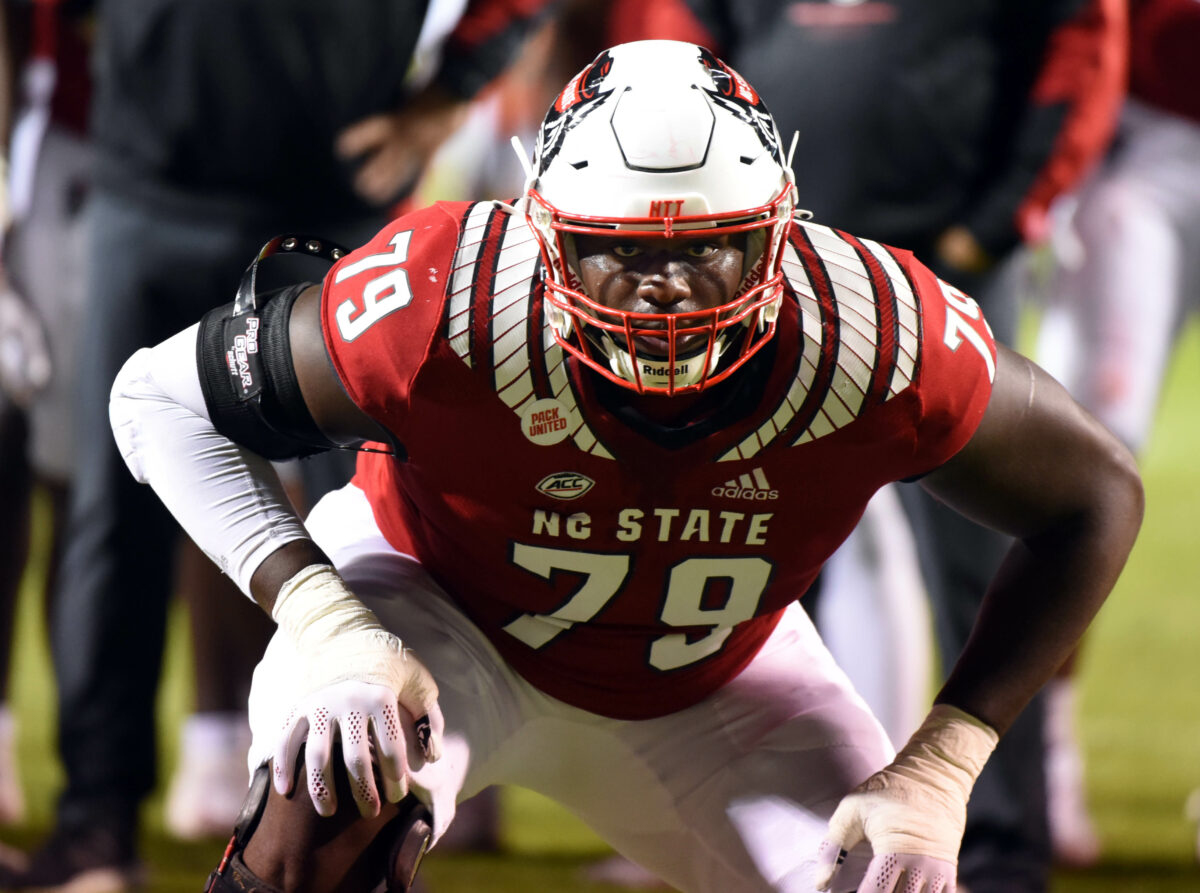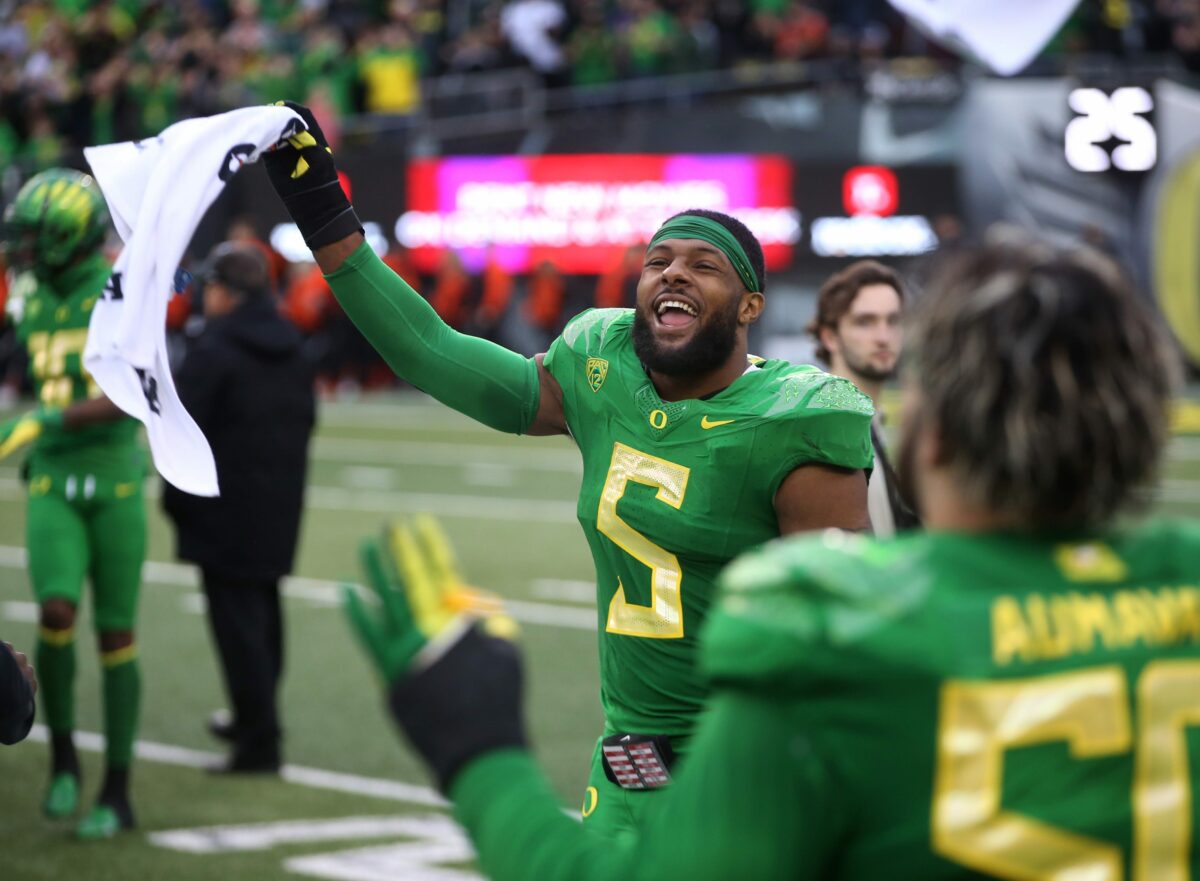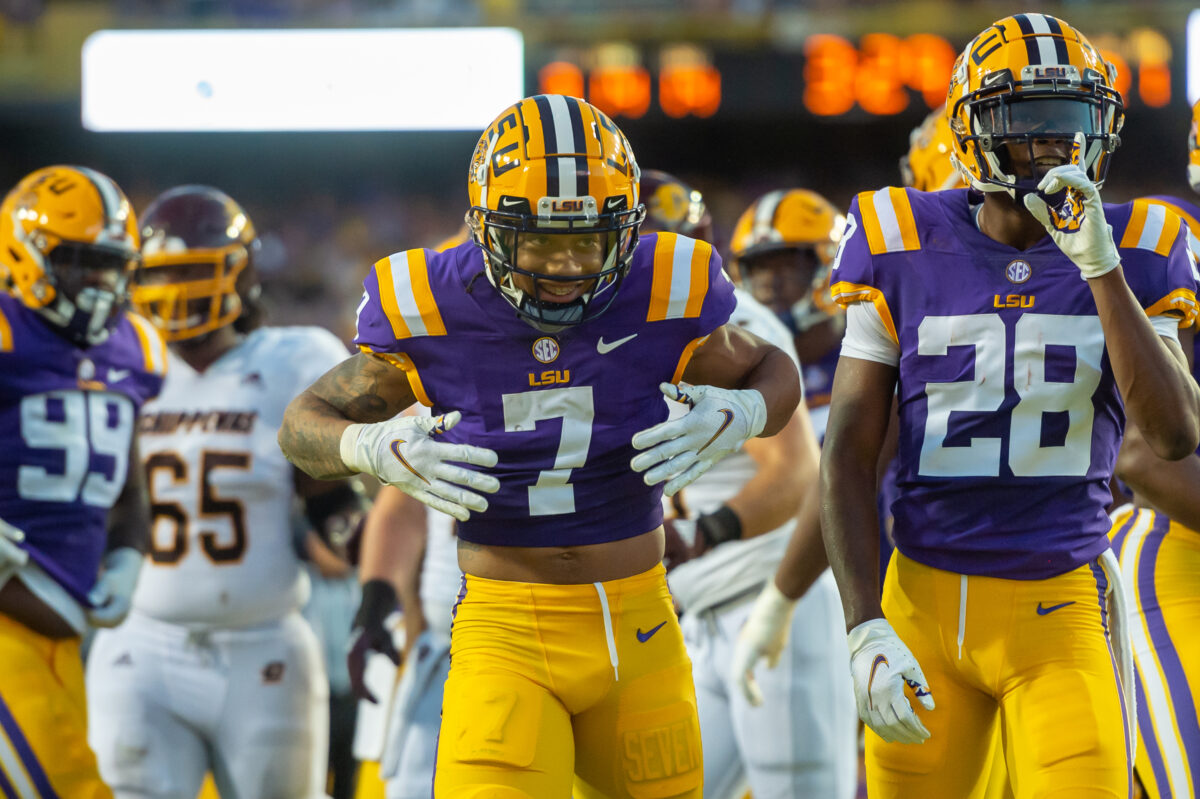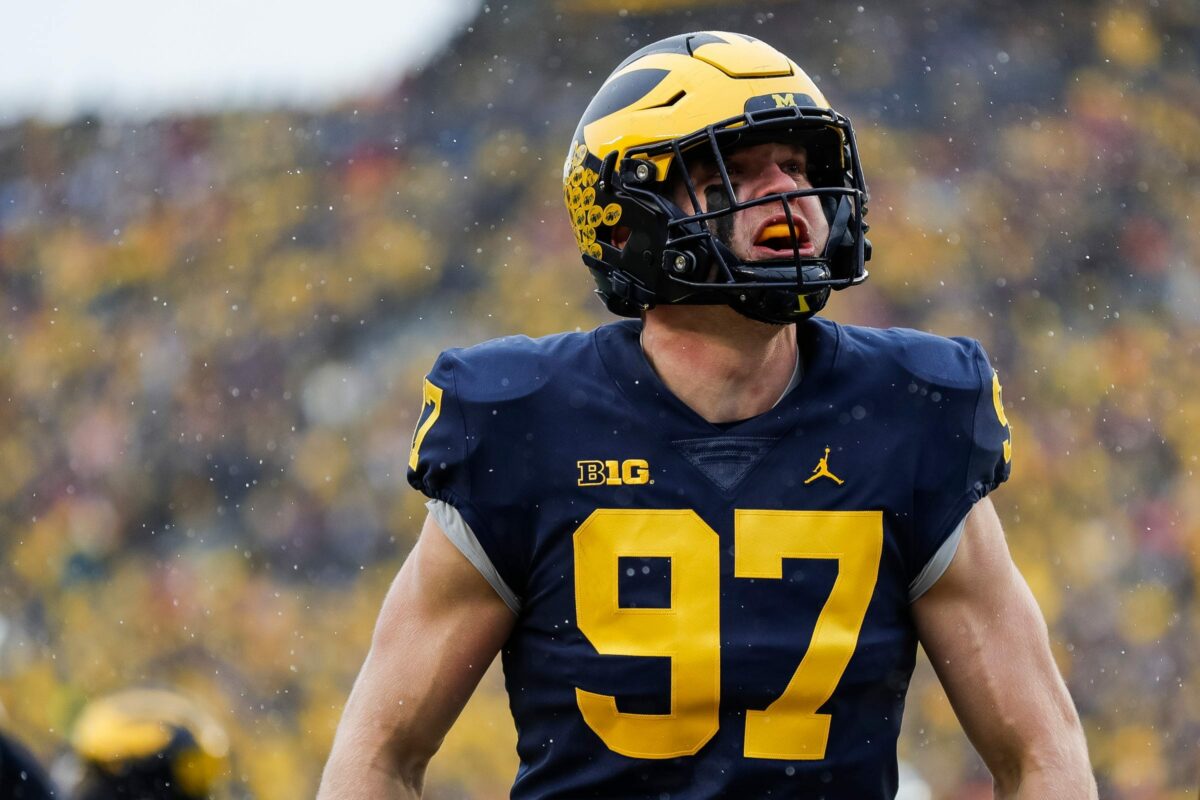With the sixth pick in the 2022 NFL draft, the Carolina Panthers select Ikem Ekwonu, OL, North Carolina State.
GRADE: B+.
Well, my NFL comp for Ekonu was Taylor Moton, who will now be Moton’s bookend, if the Panthers choose to keep Ekwonu at tackle — he could also be a plus guard. Ekwonu doesn’t quite fit the Panthers’ need for an elite pass-protector — at least not yet — but if you’re into power, he’s the guy.
Height: 6’4″ (32nd) Weight: 310 (46th)
40-Yard Dash: 4.93 seconds (95th)
10-Yard Split: 1.76 seconds (64th)
Bench Press: N/A
Vertical Jump: 29 inches (64th)
Broad Jump: 108 inches (7th)
3-Cone Drill: 7.82 seconds (49th)
20-Yard Shuttle: 4.73 seconds (52nd)
Wingspan: 84 1/4 inches (91st)
Arm Length: 34 inches (65th)
Hand Size: 10 1/4 inches (70th)
Bio: Ekwonu’s full first name (Ikemefuna) is translated from the Igbo language to mean “My effort will not be in vain.” His father T.J. is a 6-foot-6 doctor who played college basketball before coming to the United States from Nigeria, and his mother Amaka was a high school track star. Ekwonu had offers from Harvard and Yale before going to NC State, and let’s just say that the scouting serviced had him underrated — he was the No. 29 recruit in North Carolina and the No. 3131 offensive guard nationally by Rivals.com, and the No. 23 recruit in North Carolina and the No. 34 offensive guard nationally by 247Sports.com.
Ekwonu showed his potential in 2019, when he allowed no sacks and 13 total pressures on 639 snaps. Things got a bit ugly in 2020, when he gave up seven sacks and 25 pressures as a left guard/left tackle hybrid, but Ekwonu turned things around in 2021, when he gave up three sacks and 13 total pressures.
Stat to Know: Ekwonu allowed sacks in three of his final four college games, against Florida State, Syracuse, and North Carolina.
Strengths: In pass protection, Ekwonu gets his hands out quickly to discourage defenders from setting the tone through the arc, and from there, he turns on the power. Ekwonu doesn’t have Joe Thomas-level agility through the arc, but he’s great in shorter sets that allow him to bully edge defenders through the play.
When Ekwonu is on the move and on the hunt, you absolutely, positively do NOT want to be in the way. Things will end badly.
And when it’s time to slide, as was the case against North Carolina, Ekwonu uses it as another way to show his physical dominance.
This rep against Florida State is the most preposterous example of dominance in downfield blocking I’ve seen from any offensive lineman in this class. You have to love how Ekwonu uses agility and quickness as parallels with his outstanding power. This is an All-Pro rep.
Weaknesses: Ekwonu isn’t entirely consistent when it comes to hitting his targets in space, which was probably of great benefit to the NCAA as an entity.
And you can beat him to the outside and with inside counters; this issue could be amplified at the next level when he’s facing the NFL’s best speed-rushers, with all the moves at their disposal.
Conclusion: If you give Ekwonu a full season with a great NFL offensive line coach, and he gets a bit more consistent in his pass sets, he may well be the best offensive lineman in this class. Right now, the combination of agility and building-wrecking power, as well as the sheer will to dominate and the technique to do it against the NCAA’s best defenders, makes him a sure Top-10 prospect. He may be a better fit for a power-based offense at this point, but I wouldn’t limit him to this or that archetype in the long term. Like Cross and Neal, he’s a field-tilter at a crucial position.
NFL Comparison: Taylor Moton. The 2017 second-round pick of the Panthers out of Western Michigan has a similar heat-seeking, pure badass profile to Ekwonu’s, as he showed in 2020 against the Atlanta Falcons.
Yo @Panthers … Y'all got any camera angle of this finish by Moton? Might be an epic pancake pic.twitter.com/b3ZM4FjlgA
— Geoff Schwartz (@geoffschwartz) October 13, 2020
At 6-foot-5 and 325 pounds, Moton can be susceptible to speed rushers at times (just as Ekwonu can), but teams with power-based offenses will be falling all over themselves to get a tackle with Ekwonu’s power profile. We’d like to see Ekwonu and Moton playing tackle for the same team, because that would be quite fun.





